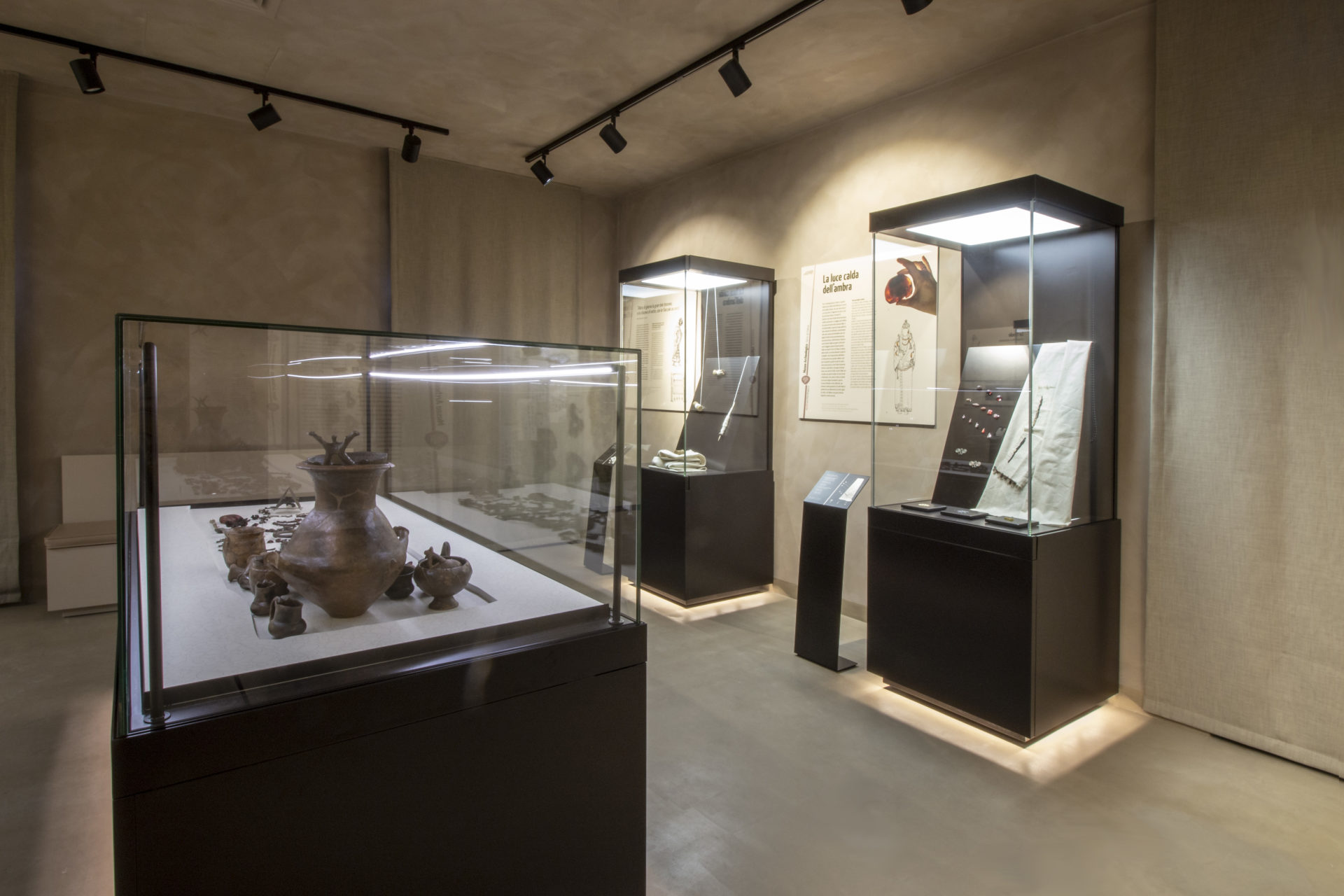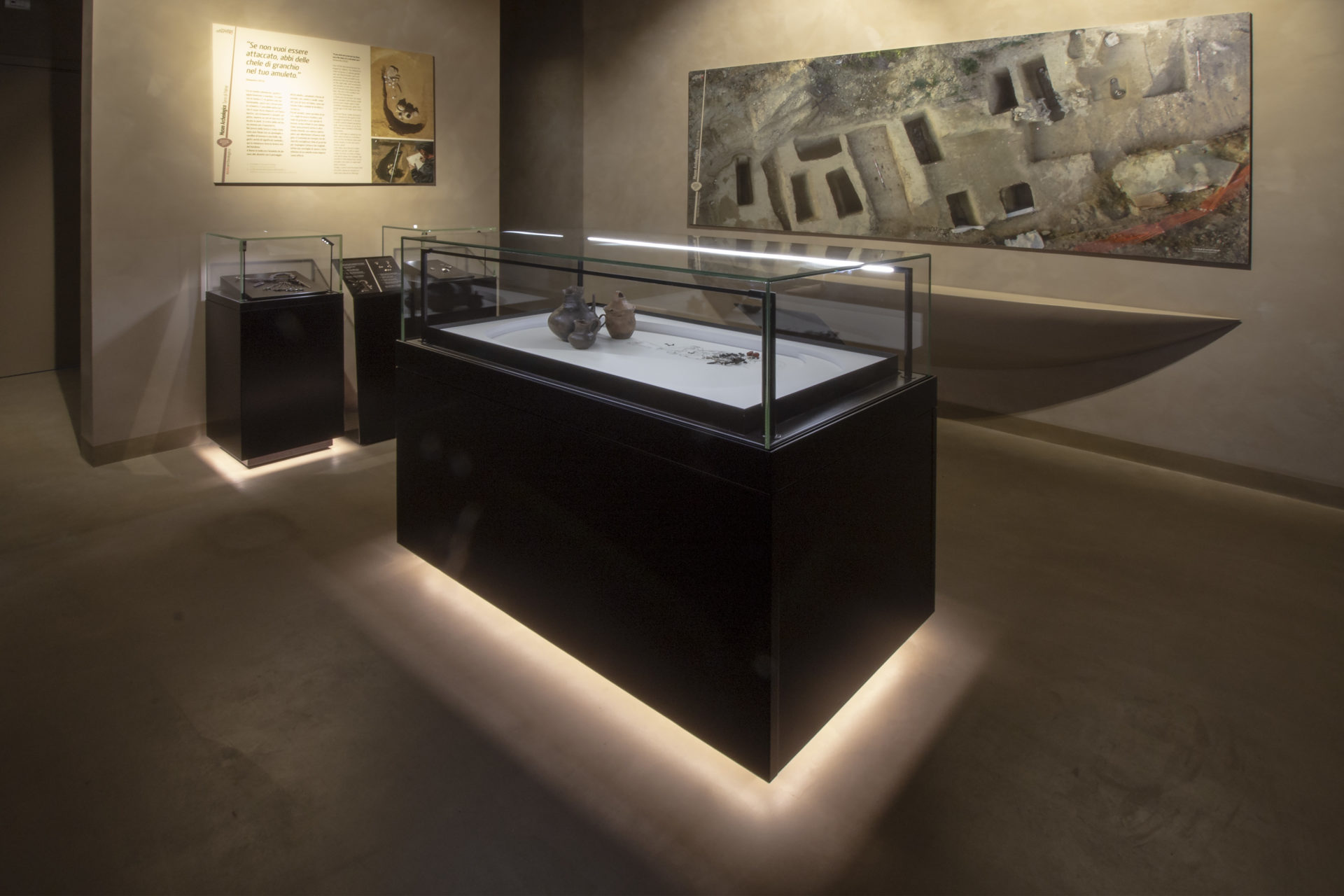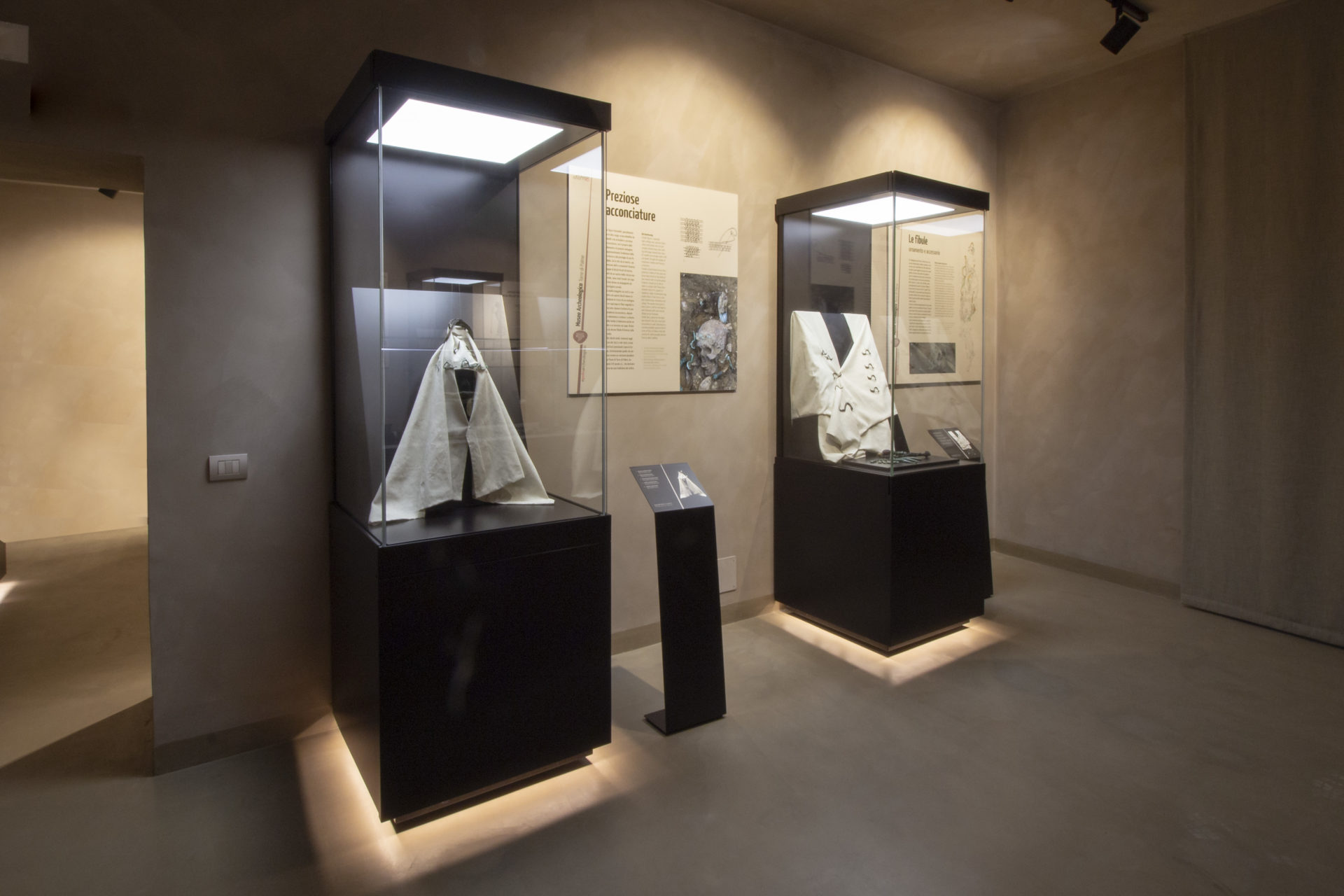June 6, 2019 /
Museum – The Archaeological Museum of Torre di Palme
The Archaeological Museum of Torre di Palme is a small museum of National and International importance.
We present one of our most recent creations through the script taken from the interview with the architect Livio Valentini, designer and work director of the Museum.
“Good morning.
I am the architect Livio Valentini, Director of Design and Works of the Museum of Torre di Palme.
The Museum is a small museum, but of national and international importance.
It has been designed as a homogeneous environment to eliminate elements that could distract the visitor from the immediate perception of the museum artifacts.
The important thing was to focus the attention as much as possible on what is really important in this path, therefore the immediate perception of the artifacts, of these beautiful stones often made of amber, which in agreement with the Superintendence of Fine Arts we decided to backlight in order to express their preciousness.
Inside these stones, you can perceive this extraordinary red heart.
For my part, the design was conceived for the enhancement of these artifacts and these bodies found, these skeletons, which at present we have preferred not to expose for reasons of conservation, but that are represented with the drawings of the same and with the artifacts found in the tombs presented in the original layout.
 Interior of the Room for the finding of the female body.
Interior of the Room for the finding of the female body.
This type of presentation is what characterized the project, then the installation of display cases in the center of the room, in two separate chambers. In the main room is reproduced the body of the Woman and in the adjacent room the body of the child, who presumably died around the age of two years, both dating back to a period of 4 centuries before Christ.
Around the depiction of their bodies are exposed these artifacts that were discovered in a truly amazing state of preservation.
On the sides are exposed in vertical display cases other objects which are certainly not of secondary importance, but which were not found near the bodies.
The description continues to the walls with the various exhibition panels.
 Interior of the Room for the finding of the child.
Interior of the Room for the finding of the child.
For the colouring of the Museum it was chosen a natural lime colour, with the aim of recreating a single “cloud” between the colouring of the walls and the resin floor.
A light grey to brown colour, reminiscent of the colour of the earth in which these remains were found.
Our intention was to renew this relationship with the earth and in some way recreate the emotion that archaeologists experienced during the discovery.
The illumination of the Museum is completely artificial light, an obligatory choice as the exhibits would not tolerate natural light.
So we thought of a light of 4000 Kelvin, neutral, uniforming the lights that came to directly illuminate the findings and spotlights that serve as lighting for the environment, so as not to create color differences but to maintain a global uniformity of light.
This has allowed us to complete the project in a context in line with our original choice, that is, an exhibition that does not distract the visitor from the observation of the artifacts but that is precisely in function of the presentation of the same, so as to obtain an environment of easy to read, immediate and intuitive content.
 Presentation of clothing and jewellery.
Presentation of clothing and jewellery.
The Museum will be further developed with a new room for the recovery of a Warrior.
The project we have prepared is, however, a complete project that also involves another room, larger than the Warrior’s room.
At the moment we are considering whether to continue with the same type of coloring that has been chosen until now or give, to this new room, a slightly darker tone to precisely characterize the figure of the Warrior.
However, in our expectations, this additional room will be even more attractive than the previous ones, both for its size and for the presence of a monolith inside.
The display cases that were made by DACA Vetrina are in our opinion very good: they are very beautiful objects that were made exactly as we thought and designed them with the help and support of the architect Amurri of DACA Vetrina, and we believe that they are a very valuable key element for the final success of the Museum.
They are really as they were imagined and rendered and I must renew my compliments to DACA for the fidelity and success of the final result compared to what we expected.
Get to know us better!
